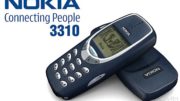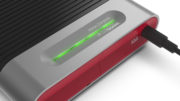In the last year, cellular signal boosters have gone from “nice option” to “must have.” More of us are still working from home than ever before and that means that bad cell service just won’t cut it. In the last year, Solid Signal has seen our cell booster business positively explode, and it’s certainly no surprise.
Cell boosters are pretty darn reliable.
I have been working with cellular signal boosters for about a decade. In that time I can count on one hand the number of times I had any problems with a production model booster. (Let’s just say that sometimes I get preproduction stuff that’s a little flaky. We all expect that.) Cellular signal boosters are just dead on reliable which is amazing when you think about how much is going on inside them. They’re powerful computers that can handle dozens of different two-way communication streams at the same time. While all that’s happening they’re checking the quality of the signal, increasing ampification where they can, and decreasing it in fractions of a second if there’s too much.
When people comment that cell boosters are expensive, that’s what I tell them about. Generally after a few sentences they realize that cell boosters are an incredible bargain.
But problems do sometimes happen
If your cell booster isn’t doing its job… before going crazy try simply unplugging it and plugging it back in a few seconds later. Remember that cell boosters are computers too, and eventually they could freeze up. A quick unplug and replug can restore them back to health.
Honestly, there’s a lot going on inside your average cell booster. In addition to complex two-way communications between the two antennas, there’s anti-feedback circuitry, auto-gain-control circuits, and at least five different two-way radios. No wonder it needs a break every so often.
Remember too, that your cell booster deserves a good, kind environment with a surge protector and an area with plenty of ventilation. Chances are you’re not giving it all the air it needs, and that can mean it freezes up from time to time.
Does a frozen booster need to be replaced?
There’s no hard-and-fast rule about when to replace a cell booster. In a recent article, I suggested that 5-7 years was about the right timeline to replace a booster. In that amount of time, new technologies have come out, and you may have something like 5G which completely changes the landscape. At any rate, the first 4G/LTE boosters are now about 7 years old and within two years we’re looking at 3G disappearing anyway. So, that may put an end to the love affair with any truly old booster.
But, before you jump to buy something new, ask yourself how much trouble a booster is really giving you. Compare that to what you expect. You may be rebooting a booster every 6 months… even that’s pretty unlikely. Is that a real burden for you? If so, time for a new one. If not, just get used to a reboot every so often. You’re the only one who can really make that decision.
Need cell booster help?
If you think you need more help than a blog article can give you, call the experts at Solid Signal! We’re here for you at 888-233-7563 during East Coast business hours. If it’s before or after those hours, fill out the form below and we’ll get back to you usually within one business day.





